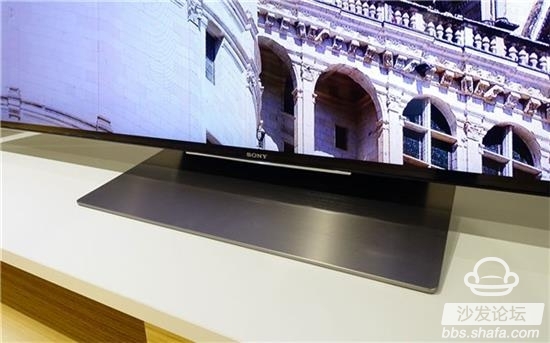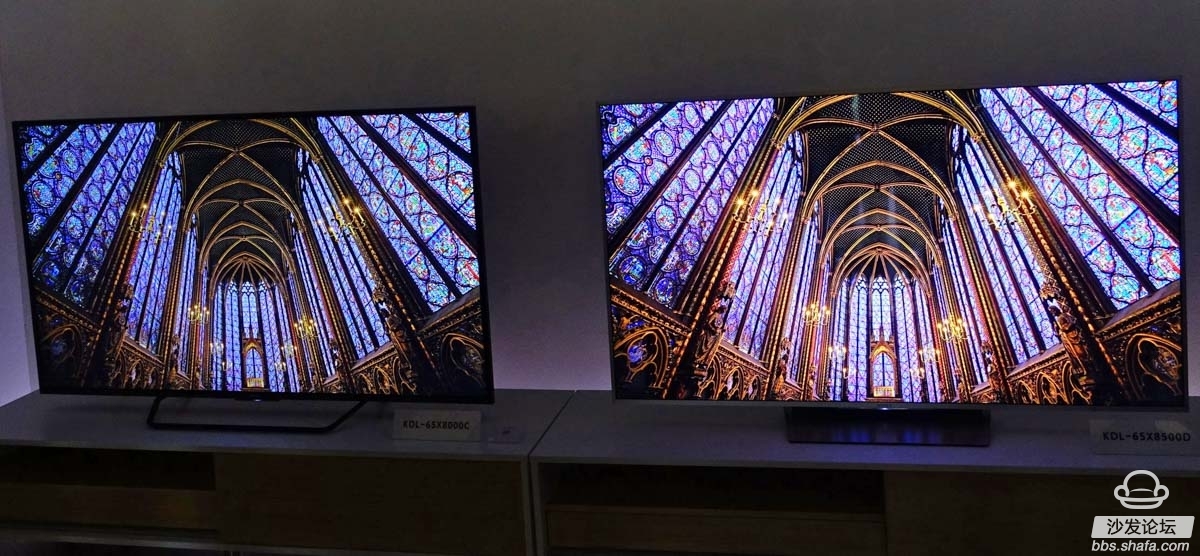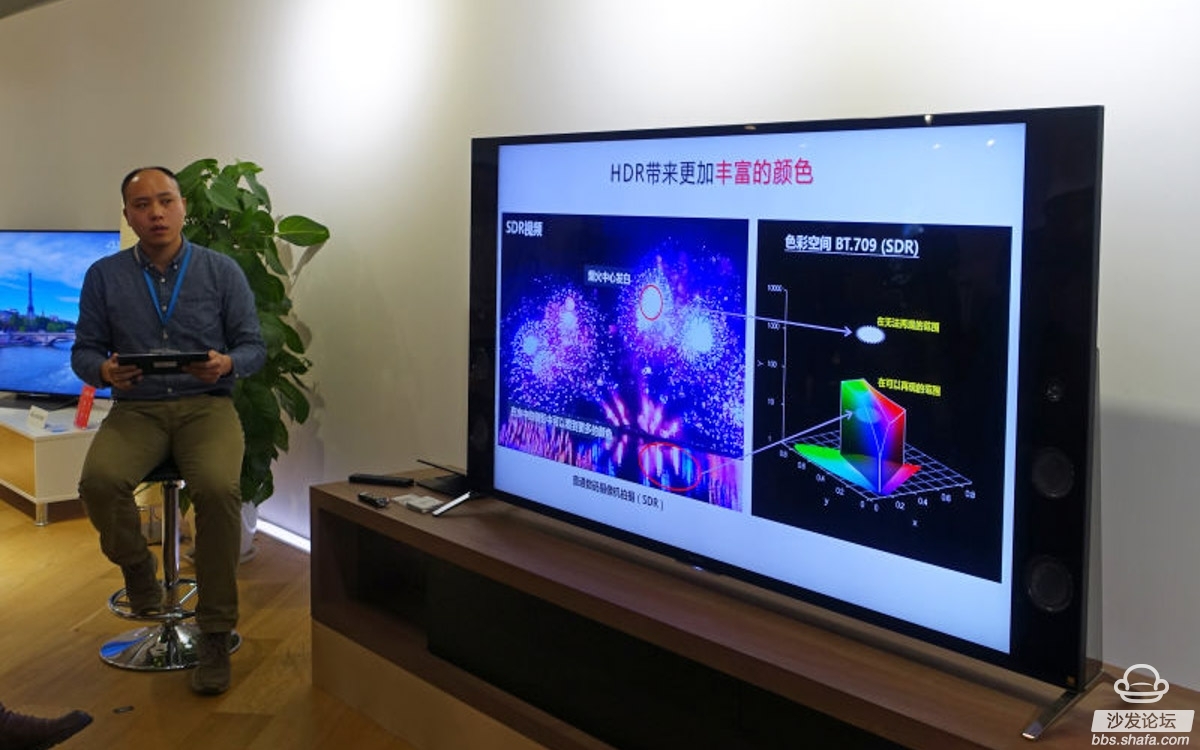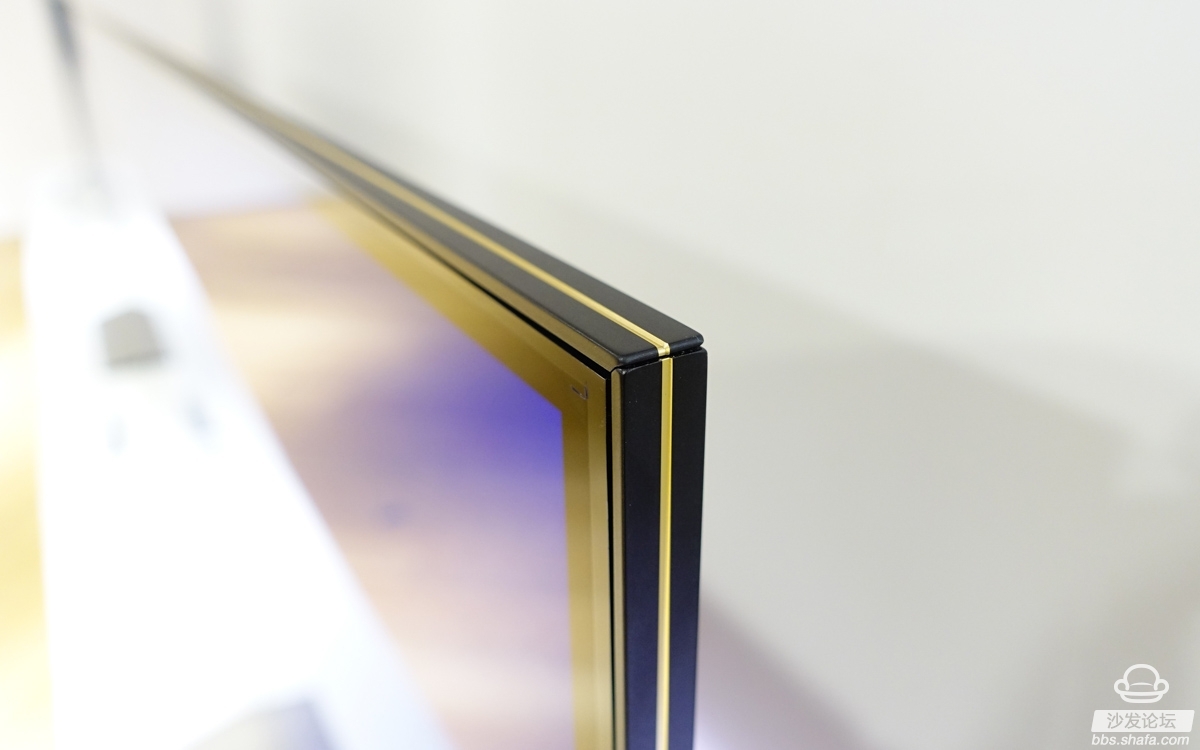At the beginning of this year's CES, the technical term "HDR" appeared as if it was "3D" many years ago and "4K" in recent years. It appeared in the flagship products of several well-known TV manufacturers, including Sony BRAVIA TVs. In the flagship series X9300D and X8500D, and according to Sony's statement, Sony TV all 4K products will carry HDR technology in 2016. So what exactly is HDR technology on TV? What kind of experience can be brought to the user?

On February 24th, Sony’s new 4K HDR TVs X9300D and X8500D were officially launched in China. Sony held an experience meeting at Sony’s outlets in Huaihai Zhong Road, Shanghai, explaining the Sony 4K HDR technology in detail.
What is HDR
For a television, the most important dimension of evaluation is still the quality of the picture. In general, there are five factors affecting image quality: one, spatial resolution, now common 1080P, 4K, etc.; two, gray resolution, affecting color depth; three, time resolution, understandable here For fluency or frame rate; four, color gamut; five, dynamic range of brightness.
With the increasing popularity of 4K resolution, widespread use of the wide color gamut technology, and the increase in frame rate to 60P or even higher, gradually, the dynamic range of brightness has become a constraint to the further improvement of the picture quality of television. At this time, HDR came into being. By complementing this dimension, users can truly feel the true high-quality feeling brought by the five-dimensional collaborative rise.
The three letters "HDR" are no strangers to most smartphone users. HDR camera mode is basically built into the current smartphone or camera. The "HDR" on the TV is, by definition, the same as the "HDR" of the cell phone and the camera. That is, the HDR three-letter means "High Dynamic Range."
"HDR" in mobile phones is to take multiple photos with different exposures at a time, so as to obtain a photo with high tolerance.

TV HDR is more of a standard, or a format. The previous TV dynamic range is called the standard dynamic range, or SDR for short. Compared with SDR, HDR can increase the tolerance of the picture, the highlights are not too bright and even pale, and the bleakness is not even dead. The details cannot be seen.
If you make an analogy, the SDR's screen looks like an ordinary photo that has not been processed, and the HDR screen looks like the photo taken by the mobile phone in HDR mode.
HDR is a complete system

The first thing to be clear is that the LCD screen itself will not emit light, and all of its light comes from the backlight system that the TV is equipped with. The HDR of LCD TVs mainly depends on the backlight system. In general, the direct-type backlight system can achieve localized light control, so the brightness dynamic range will be much better, but the body thickness of the TV is difficult to control; the side-entry type backlight system can make the thickness of the TV the ultimate, but the brightness The performance of dynamic range is worrying.
At this year's CES, Sony released two models of Dynamic Backlight System Elite and Dynamic Backlight System for HDR TVs. Taking the elite version of the dynamic backlight system onboard the flagship X9300D listed this time as an example, the backlight system adopts a new edge-lit LED backlight structure to realize thin and local light control fusion.

Compared with the conventional side-entry type, there is only one light guide plate, and the elite version of the dynamic backlight system has two light guide plates, which ensures the slimness of the body and enhances the local control of the backlight area. With Sony's Elite Optical PRO technology, you can instantly increase the brightness of the brightest area by 3 times. This will not only make the highlights in HDR sources overexposure and lose their color details, while the dark areas will also ensure darker areas. And the level is clear, this makes the picture color level more abundant, the color transition is more natural.
However, the concept of “HDR†in the television field is just like the concept of “4K†before it, not just the TV itself, but a complete system from shooting equipment to content transmission to content display.
In today's situation, there are not many situations that can completely realize the three links of HDR. Many shooting equipments do not have the features with high dynamic range characteristics, signal transmission also loses a lot of quality, and the material of native HDR is not common. So, through Sony's X1 chip-driven Terricolor and sophisticated optical control technology, the X9300D/X8500D series can increase the normal SDR content (color and brightness dynamic range) to near HDR effects. At the same time, the narrow color gamut of the TV signal will be promoted to near the wide color gamut by Terry Charm, and the high-definition video will be upgraded to a near 4K effect.
How will the development of TV picture quality develop in the future?
Many people, especially the younger generation, have said that they haven’t been on television for a long time. When television is more often used as a decoration in the living room, is the picture quality of the TV no longer important?
Of course not. Although the importance of TV picture quality may be giving way to intelligent systems and ultra-thin/narrow frame designs, we also need to see more TV picture quality technologies or concepts coming to the fore. 4K After the HDR concept emerged, what will happen after HDR?

On February 24th, Sony’s new 4K HDR TVs X9300D and X8500D were officially launched in China. Sony held an experience meeting at Sony’s outlets in Huaihai Zhong Road, Shanghai, explaining the Sony 4K HDR technology in detail.
What is HDR
For a television, the most important dimension of evaluation is still the quality of the picture. In general, there are five factors affecting image quality: one, spatial resolution, now common 1080P, 4K, etc.; two, gray resolution, affecting color depth; three, time resolution, understandable here For fluency or frame rate; four, color gamut; five, dynamic range of brightness.
With the increasing popularity of 4K resolution, widespread use of the wide color gamut technology, and the increase in frame rate to 60P or even higher, gradually, the dynamic range of brightness has become a constraint to the further improvement of the picture quality of television. At this time, HDR came into being. By complementing this dimension, users can truly feel the true high-quality feeling brought by the five-dimensional collaborative rise.
The three letters "HDR" are no strangers to most smartphone users. HDR camera mode is basically built into the current smartphone or camera. The "HDR" on the TV is, by definition, the same as the "HDR" of the cell phone and the camera. That is, the HDR three-letter means "High Dynamic Range."
"HDR" in mobile phones is to take multiple photos with different exposures at a time, so as to obtain a photo with high tolerance.

(Left is TV not supporting HDR, right support)
TV HDR is more of a standard, or a format. The previous TV dynamic range is called the standard dynamic range, or SDR for short. Compared with SDR, HDR can increase the tolerance of the picture, the highlights are not too bright and even pale, and the bleakness is not even dead. The details cannot be seen.
If you make an analogy, the SDR's screen looks like an ordinary photo that has not been processed, and the HDR screen looks like the photo taken by the mobile phone in HDR mode.
HDR is a complete system

The first thing to be clear is that the LCD screen itself will not emit light, and all of its light comes from the backlight system that the TV is equipped with. The HDR of LCD TVs mainly depends on the backlight system. In general, the direct-type backlight system can achieve localized light control, so the brightness dynamic range will be much better, but the body thickness of the TV is difficult to control; the side-entry type backlight system can make the thickness of the TV the ultimate, but the brightness The performance of dynamic range is worrying.
At this year's CES, Sony released two models of Dynamic Backlight System Elite and Dynamic Backlight System for HDR TVs. Taking the elite version of the dynamic backlight system onboard the flagship X9300D listed this time as an example, the backlight system adopts a new edge-lit LED backlight structure to realize thin and local light control fusion.

Compared with the conventional side-entry type, there is only one light guide plate, and the elite version of the dynamic backlight system has two light guide plates, which ensures the slimness of the body and enhances the local control of the backlight area. With Sony's Elite Optical PRO technology, you can instantly increase the brightness of the brightest area by 3 times. This will not only make the highlights in HDR sources overexposure and lose their color details, while the dark areas will also ensure darker areas. And the level is clear, this makes the picture color level more abundant, the color transition is more natural.
However, the concept of “HDR†in the television field is just like the concept of “4K†before it, not just the TV itself, but a complete system from shooting equipment to content transmission to content display.
In today's situation, there are not many situations that can completely realize the three links of HDR. Many shooting equipments do not have the features with high dynamic range characteristics, signal transmission also loses a lot of quality, and the material of native HDR is not common. So, through Sony's X1 chip-driven Terricolor and sophisticated optical control technology, the X9300D/X8500D series can increase the normal SDR content (color and brightness dynamic range) to near HDR effects. At the same time, the narrow color gamut of the TV signal will be promoted to near the wide color gamut by Terry Charm, and the high-definition video will be upgraded to a near 4K effect.
How will the development of TV picture quality develop in the future?
Many people, especially the younger generation, have said that they haven’t been on television for a long time. When television is more often used as a decoration in the living room, is the picture quality of the TV no longer important?
Of course not. Although the importance of TV picture quality may be giving way to intelligent systems and ultra-thin/narrow frame designs, we also need to see more TV picture quality technologies or concepts coming to the fore. 4K After the HDR concept emerged, what will happen after HDR?